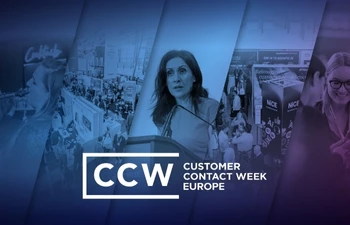Human-Centred Change: From Complaint Management to Great CX
Human-centred change is an underestimated business unit and overarching discipline to drive new technology transformations and process harmonisation. Salesforce provides insight on how the methodology is key to change effectiveness.
Add bookmark
A customer's experience with an organisation is only as good as an employee's experience. The two share a mutually dependent “chicken and an egg” relationship. Nevertheless, many company initiatives such as an organisation’s working environment, company culture, and overall business strategy are still managed and measured against traditional key performance indicators (KPIs). Examples include profit increase, reduced operational costs, the number of leads and prospects, the average value of purchases, and the level of customer engagement. However, business KPIs around improvement rarely centre around the employee experience (EX). To do this, businesses need human-centred change (HCC) – putting people at the centre of everything you do – to become a reality.
Many customer management professionals, however, still do not take HCC into account in order to achieve their performance goals. If businesses follow a structured approach from the outset of a project, HCC can help to facilitate a comprehensive transformation to better both the customer and employee experience. Research shows that brands who evolve both their customer and employee experience simultaneously are more likely to achieve overall company targets. An article by Forbes, for example, reported that “companies with an excellent customer experience (CX) have employees that are 1.5 times more engaged than employees at companies with less satisfactory CX, [in addition to], companies with highly engaged employees outperform their competitors by 147%.”
For businesses, it is important to recognise that there are several different change management methodologies worth considering, including Prosci’s data-driven ADKAR model, SuccessHacker’s Change Management for CS course, and many others. Whatever methodology organisations choose to adopt, it is essential that they align their HCC management strategies with their CX and EX strategies.
“First of all, HCC means listening,” Patricia Dold, Business Strategy Director at Salesforce explains. “To enact change that delivers customer success, organisations need to move away from initiatives that are oriented around achieving defined business targets. This is completely separate from CX, which is based on passion, engagement, desire, and creating an emotional connection between companies and their customers.”
When performed well, HCC helps prepare, equip, and support individuals to successfully adopt change. It boosts performance, increases profits, and enhances an organisation’s competitive edge. Overall, companies that integrate HCC are more likely to meet their objectives than those that do not.
Conversely, when change initiatives fail – as they do 70% of the time – not only is the expected value not achieved but costs and risks emerge. There is a loss of investment in projects, a lack of efficiency in product usage, lost opportunity for the company, and there may be negative repercussions for the brand.
These potential negative impacts have not discouraged companies from pursuing change. In fact, nearly 75% of organisations expect to multiply the types of major change initiatives they undertake in the next three years. It is essential they get them right – for their customers and their employees.
Prioritise the Customer and Employee Experience
If businesses want to ensure that their change management initiatives are effective, they must put customer and employee experience right at the top of the agenda.
“One way to inform the priority of this fixed relationship is ensuring every stakeholder in contact with the customer has a 360-degree view. Everyone should know everything in real-time about the customer while interacting with them.” Dold says. “Organisations need to sync information across borders, not just in marketing, not just in services, and not just in sales. Everyone has their own department but data relating to the customer needs to be integrated to create a holistic picture.”
Ensuring this data is available to every stakeholder requires technology and knowledge.
“Securing every stakeholder’s understanding of why and how their participation is required to increase the businesses’ CX is part of HCC management,” Dold explains.
Organisations' inability to prioritise CX was laid bare in a 2021 study by MSG Group, which found that despite 80% of CEOs assuming that their company provides good CX, just 8% of customers share this opinion. Change does not just affect your employees; it impacts customers too. Businesses must keep this front of mind.
In fact, the impact of change on employees and customers cannot be separated. Almost two-thirds (66%) of respondents to the 2021 IDC Future Enterprise Resiliency and Spending Survey stated that improved EX leads to higher levels of customer satisfaction.
CX benefits businesses greatly when they are investing in digital transformation and employee productivity. HCC can bring EX and CX together under a single umbrella.
Making Change Management Work
As mentioned above, there are various different approaches that organisations can take to enable effective change management. Nonetheless, it is vital that businesses do not take a blinked approach to change that focuses only on internal measures of success.
“Habitually in the automotive industry, for example, depending on the business unit the contact centre is directing me (the customer) to (sales or services), the responsible agent will be advising me based on the business targets they are trying to achieve rather than providing me with the best solution to resolve my issue. The ultimate goal of a sales department is to sell cars, and the goal of the services department is to repair cars. In consequence, organisations need to re-think their whole enterprise structure to truly become customer-centric,” Dold adds. “This is why Salesforce has teams based around the globe helping customers with change. To support this, we have developed our own change management model.”
The framework that Dold mentions has been dubbed, “LEVERS” and is built on six strategic pillars: Leadership, Ecosystem, Values, Enablement, Rewards, and Systems. Research by Salesforce indicates that successful change is 10 times more likely when four or more of these six LEVERS are engaged.
Each lever is key to driving sustainable change and influencing change adoption. Take the Values lever, for example. Connecting change to what people already value is the most effective way to motivate others. Obtaining direct customer feedback to influence your internal teams is one way of ensuring that change programmes deliver customer success. It means change is not a buzzword or dependant on some arbitrary idea of success. It follows from what customers already care about and value.
Achieve Success by Accepting Failure
Profound change requires action in terms of what is seen and unseen. It is not just about meeting targets or analysing certain metrics. It is about creating a customer-centric culture. To influence culture, businesses need to look at tangible, non-human, structural factors (strategies, systems, structures, and processes), as well as intangible, human, cultural factors (unwritten rules, values, assumptions, and behaviours).
Culture is essential to customer success. It is important that businesses are open, honest, and unafraid of owning up to their mistakes. “One of the best examples of cultural change I have witnessed involves a company in Berlin that has an annual award for the ‘best failure’,” Dold continues. “They are not afraid of failure. They acknowledge it, learn from it, and use it to mitigate future risks.”
By considering their environment, technology, processes, and structure, organisations can embed change within their entire culture, whether they want to foster collaboration, enhance communication, or be more transparent around successes (and failures). An overwhelming 71% of customers prefer buying from companies that are aligned with their values. Change management can make sure you are one of them.
Embracing a New Model for Change
Change management comes in many forms but the most effective frameworks place CX and EX at their centre. Bridging the disconnect between the level of service businesses believe they are delivering, and the actual experience of the customer is key.
Change management frameworks like Salesforce’s LEVERS model provide a methodology that identifies barriers to change so you can implement transformation initiatives from the top to the bottom of your organisation – never forgetting who change is ultimately designed to benefit: your people.
For the German translation of this article, click here.






















